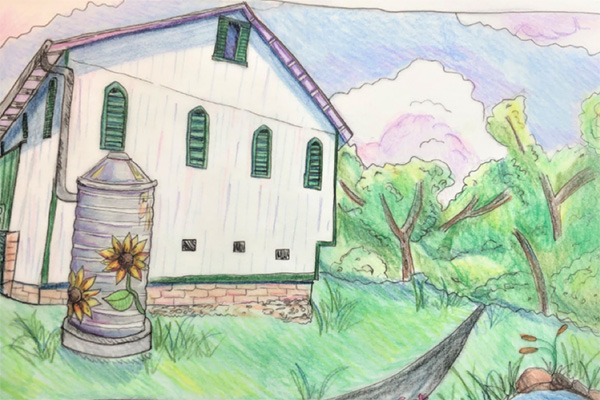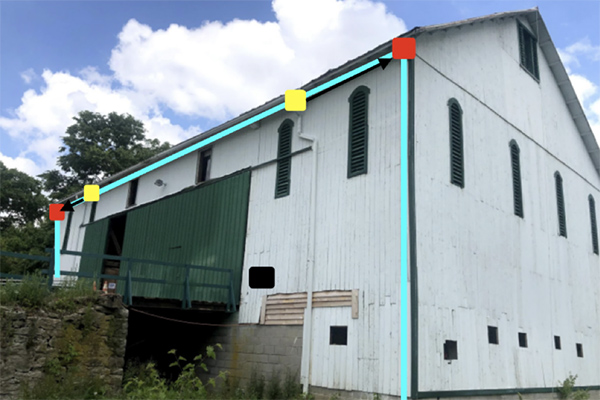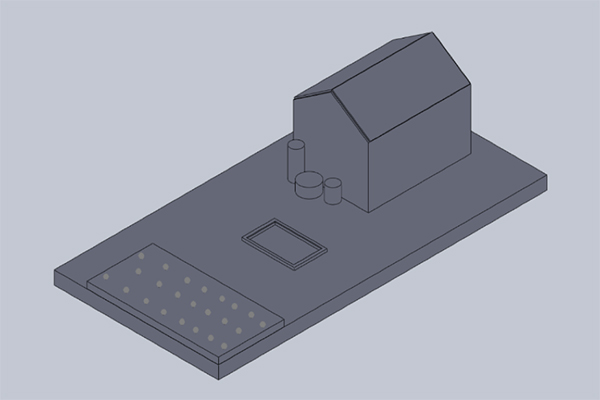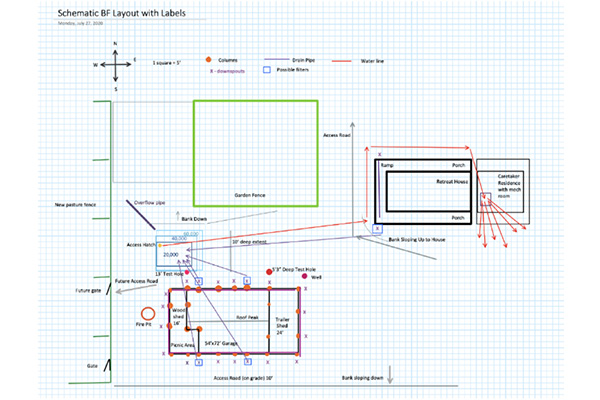Dayton Engineer
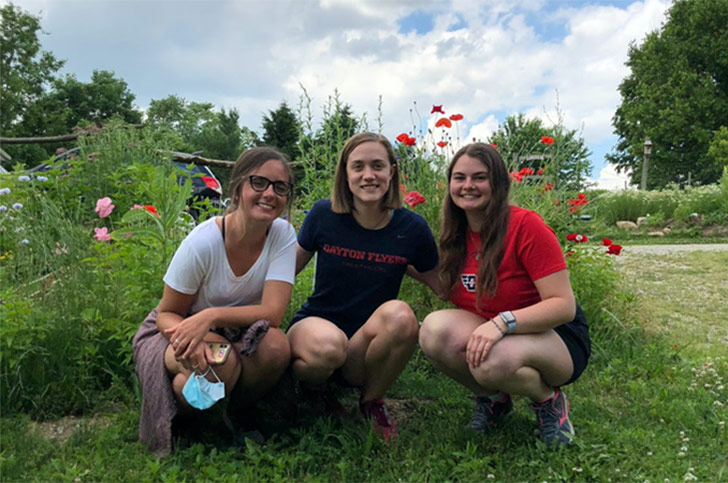
University of Dayton ETHOS remote immersion projects: Water catchment system designs for community partners
By Brianna Dooley, The ETHOS Center
This summer, 19 University of Dayton School of Engineering students worked remotely for various ETHOS partners thanks to the KEEN grant from the Kern Family Foundation.
Three students: Claire Abele, senior, civil engineering, Sammy Miller, senior, chemical engineering, and Isabelle Hofmeister, sophomore, civil engineering, worked together via Zoom to complete two projects: design a water catchment system for Bethlehem Farm located in Alderson, WV, and research various types of cistern materials for Community Solutions located in Yellow Springs, OH. They used ArcGIS software to study topography and AutoCAD and SolidWorks software for designs and area layouts.
The goal for the Bethlehem Farm project was to design a water catchment system to collect rainwater from a garage roof for use around the property. The students conducted research and interviews with experts on the systems and installation process. “Our final deliverable to them was a design manual that contained information about why they should collect rainwater, our design process, their water usage and rainfall amounts, the containment we chose, material descriptions, the installation steps, suppliers and cost estimates. We hope this manual will not only save them time and money but will also be used as a resource for other small farms and communities in the Appalachian area,” said Abele.
The goal for Community Solutions was similar: writing a design manual with information about the chosen cistern design, sizing specifications, possible supplies and cost estimates. “We hope this manual will help them write a grant to receive the necessary funds and will serve as an educational tool for other small-scale farmers in the area,” said Abele.
The students spent approximately 20 hours per week between the two projects. “For me, the biggest take away from my work this summer was the necessity of curiosity. [I was] pushed to learn more, ask questions, and engage with more people and was able to better serve the community partners. Additionally, I really enjoyed learning more about and connecting with end-users, stakeholders, and community partners,” said Hofmeister.

